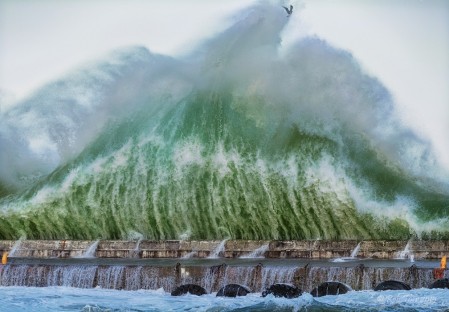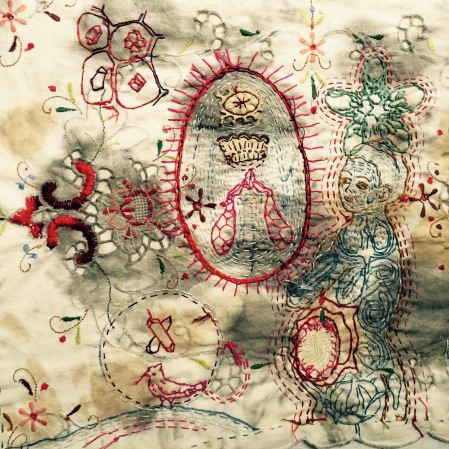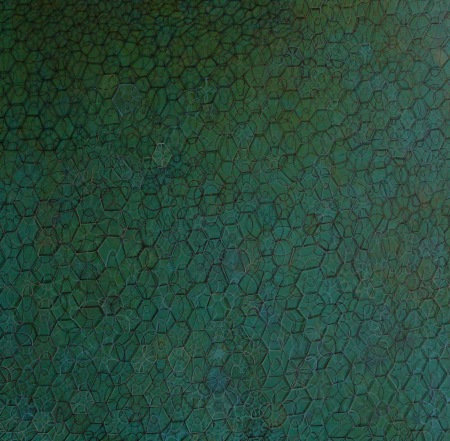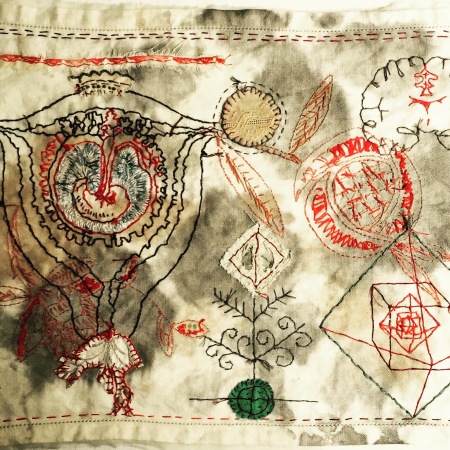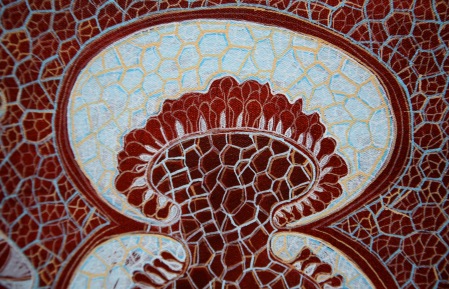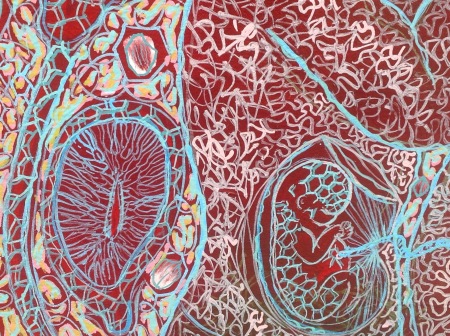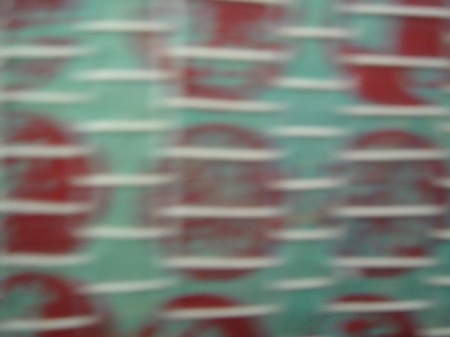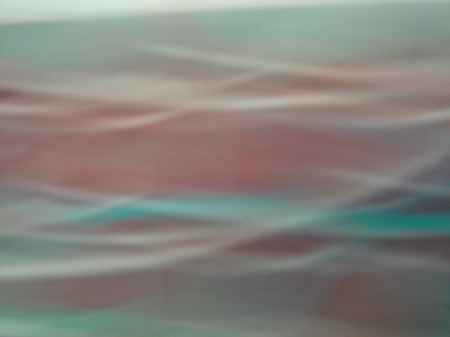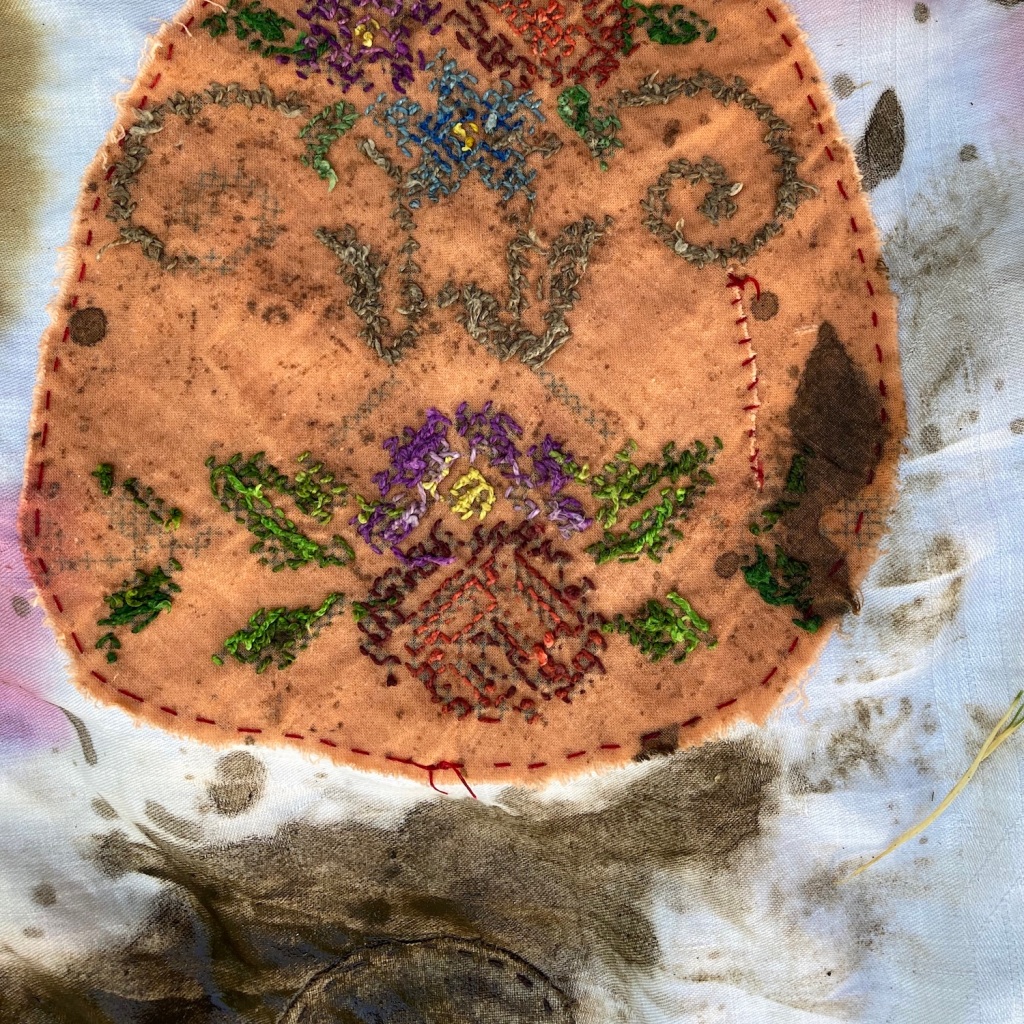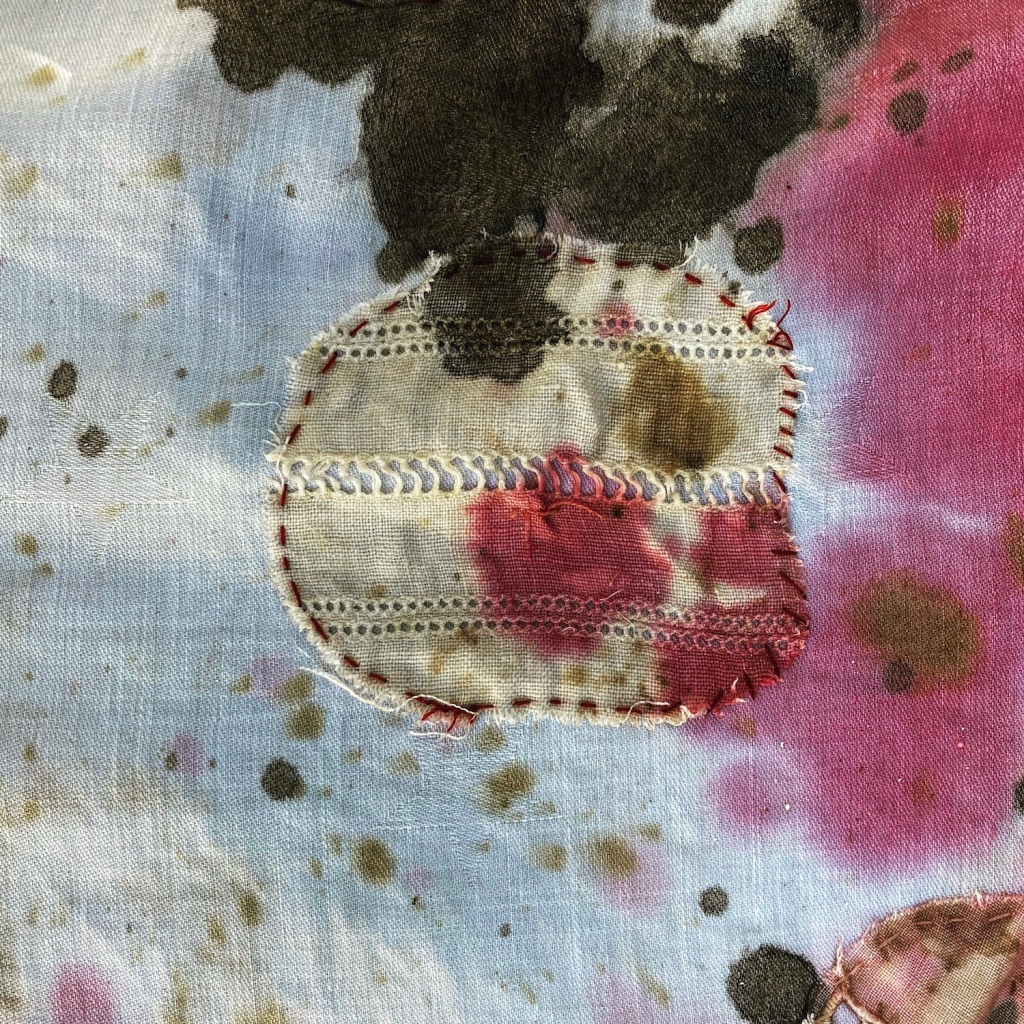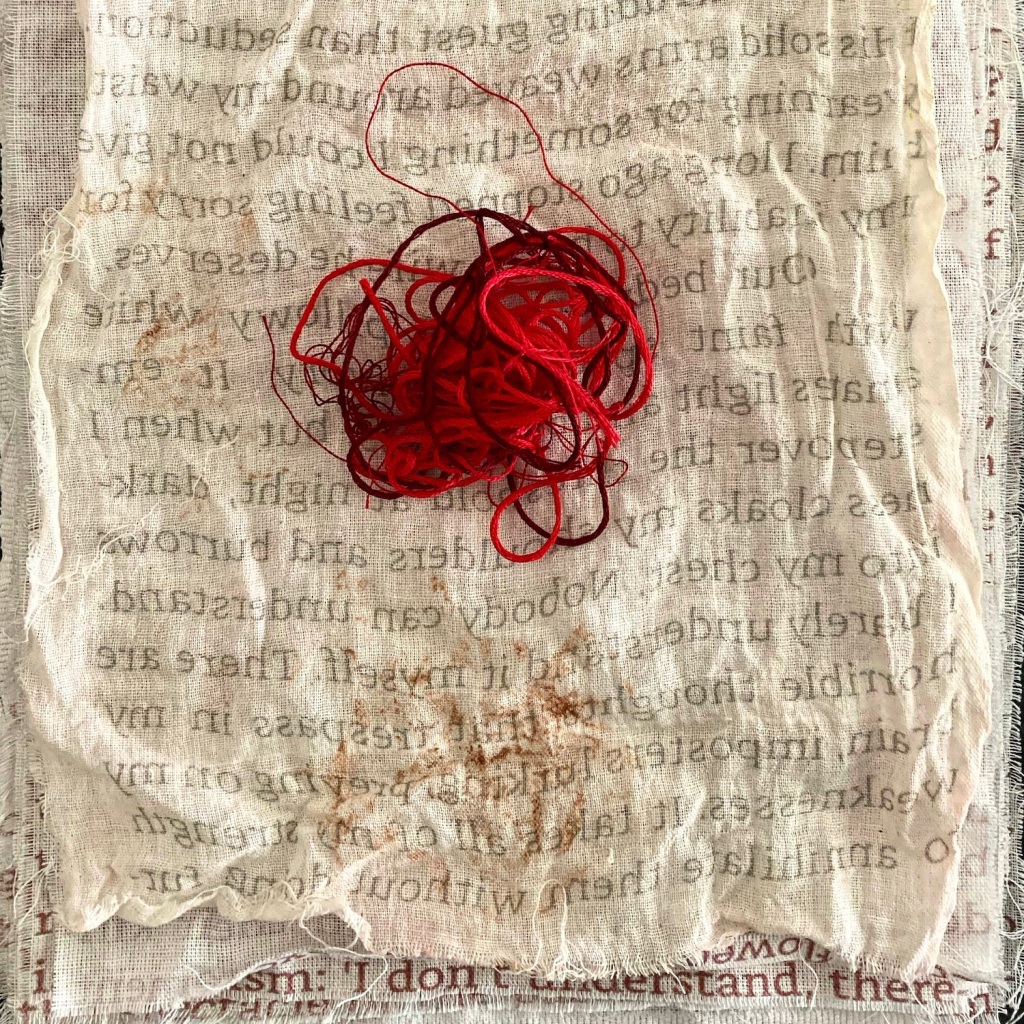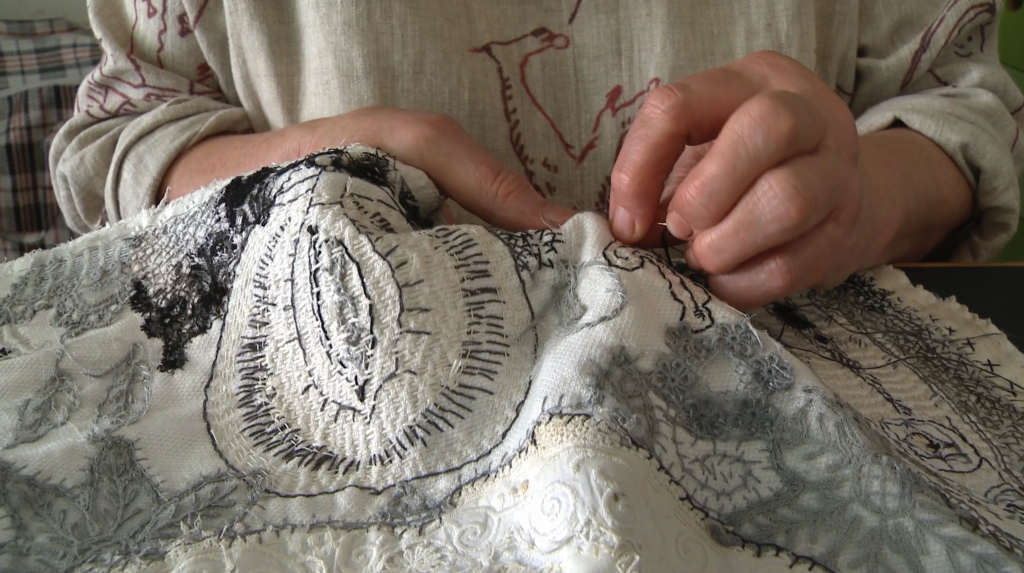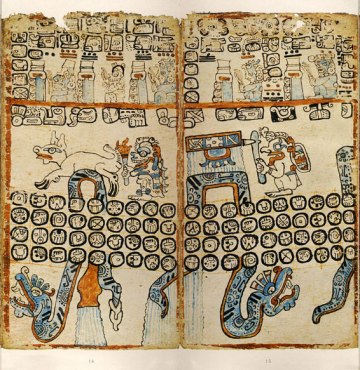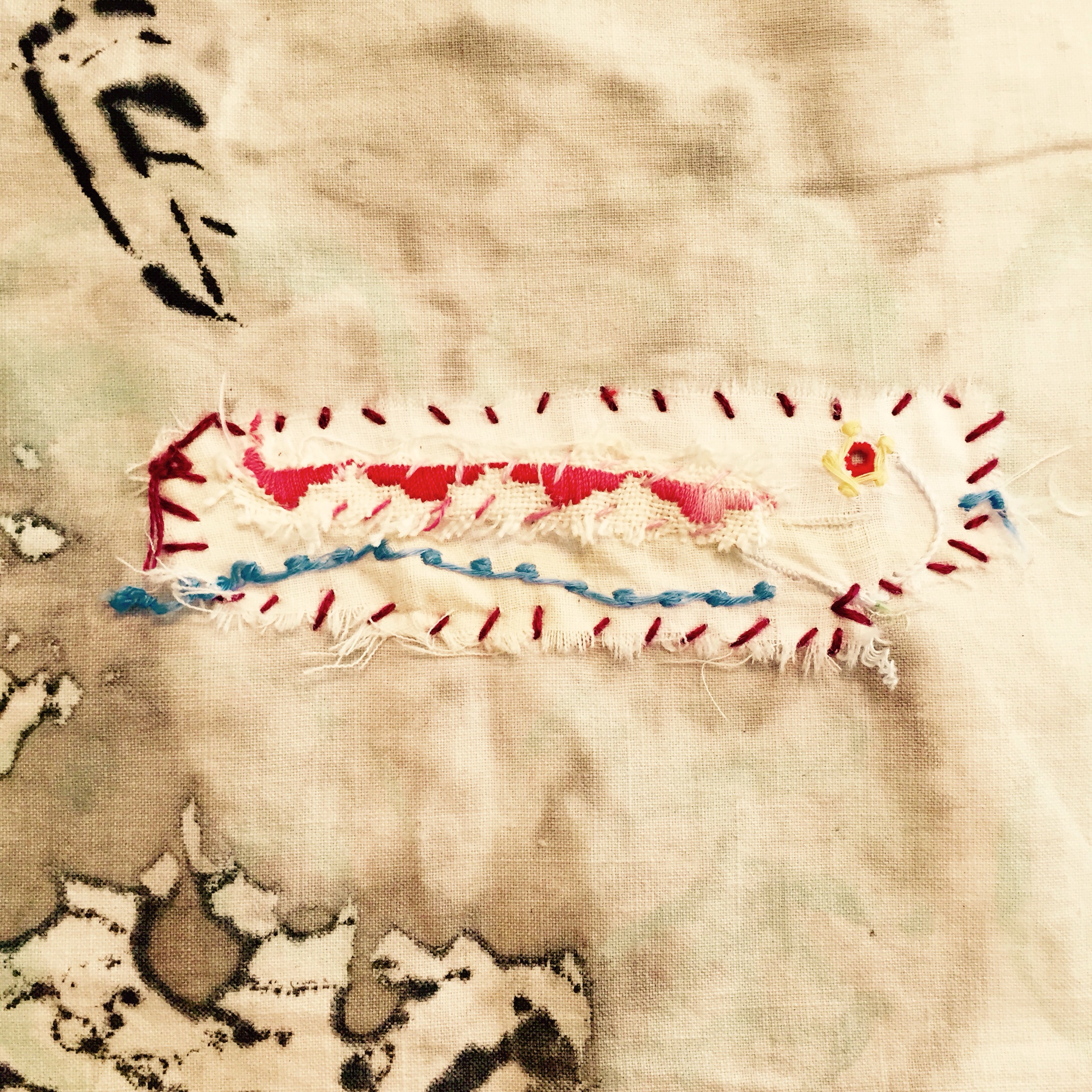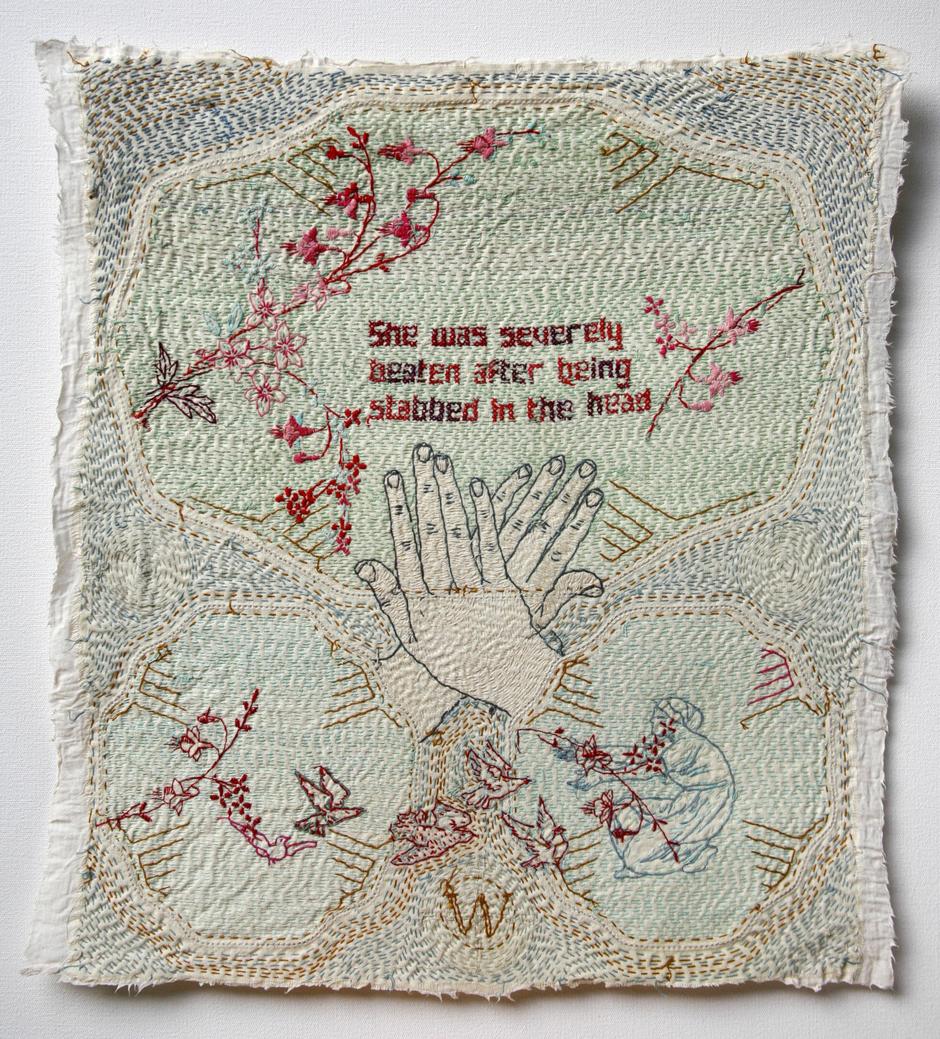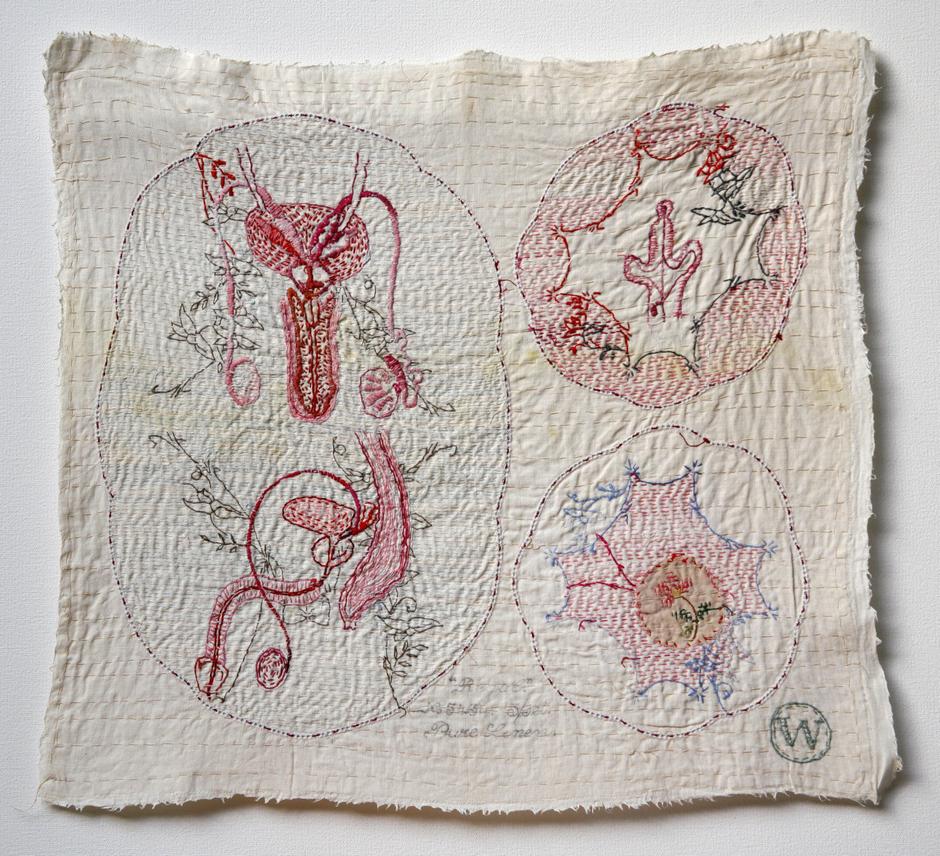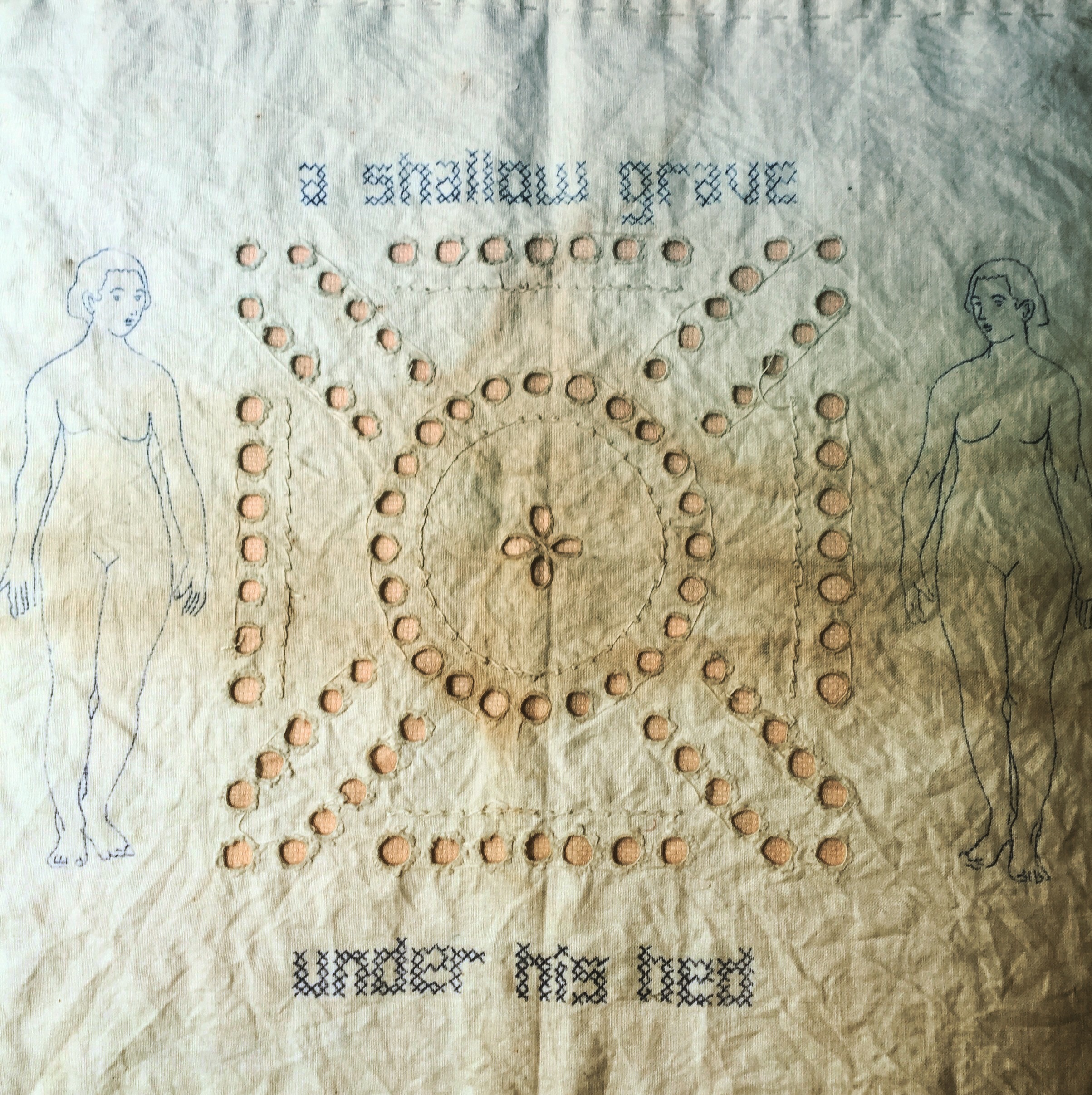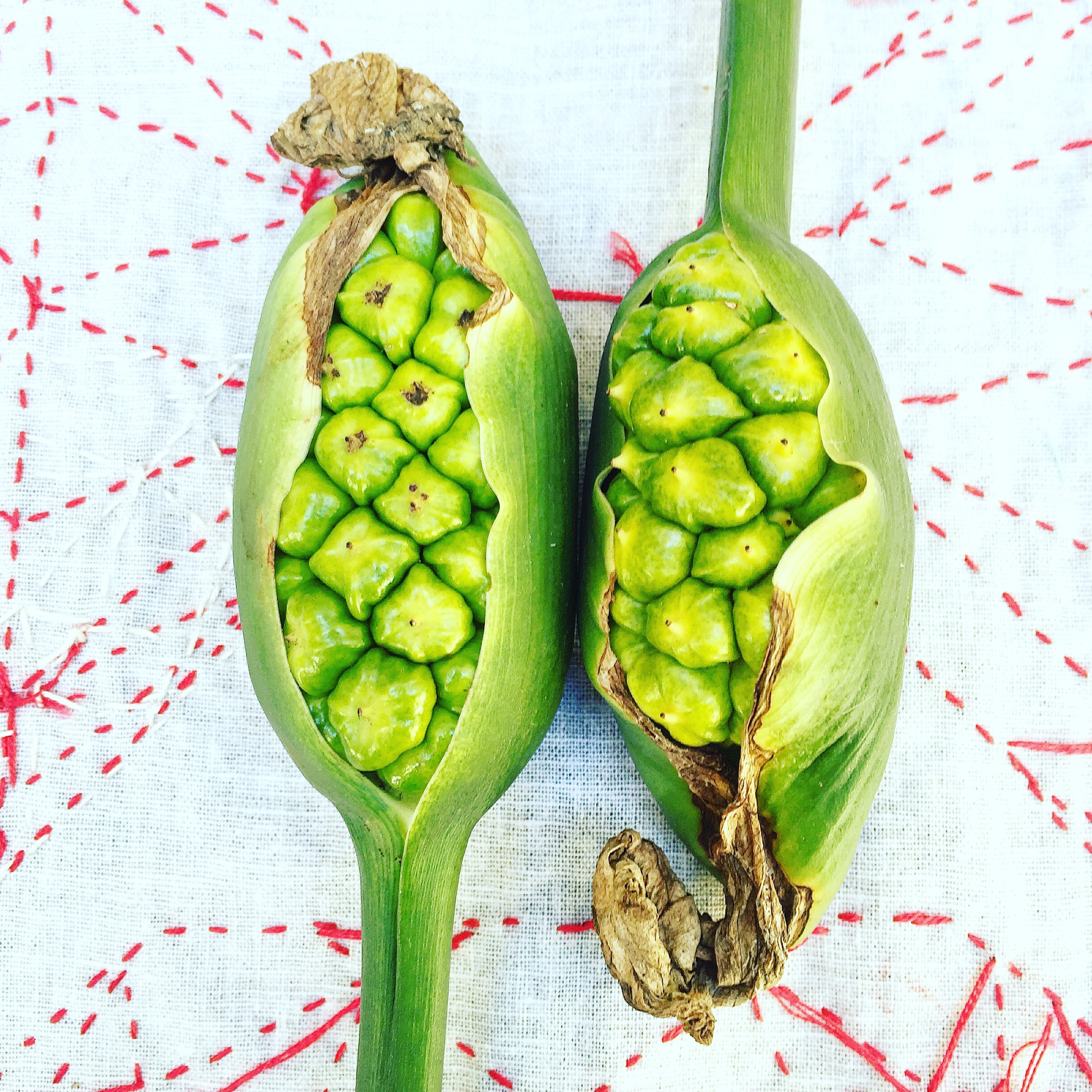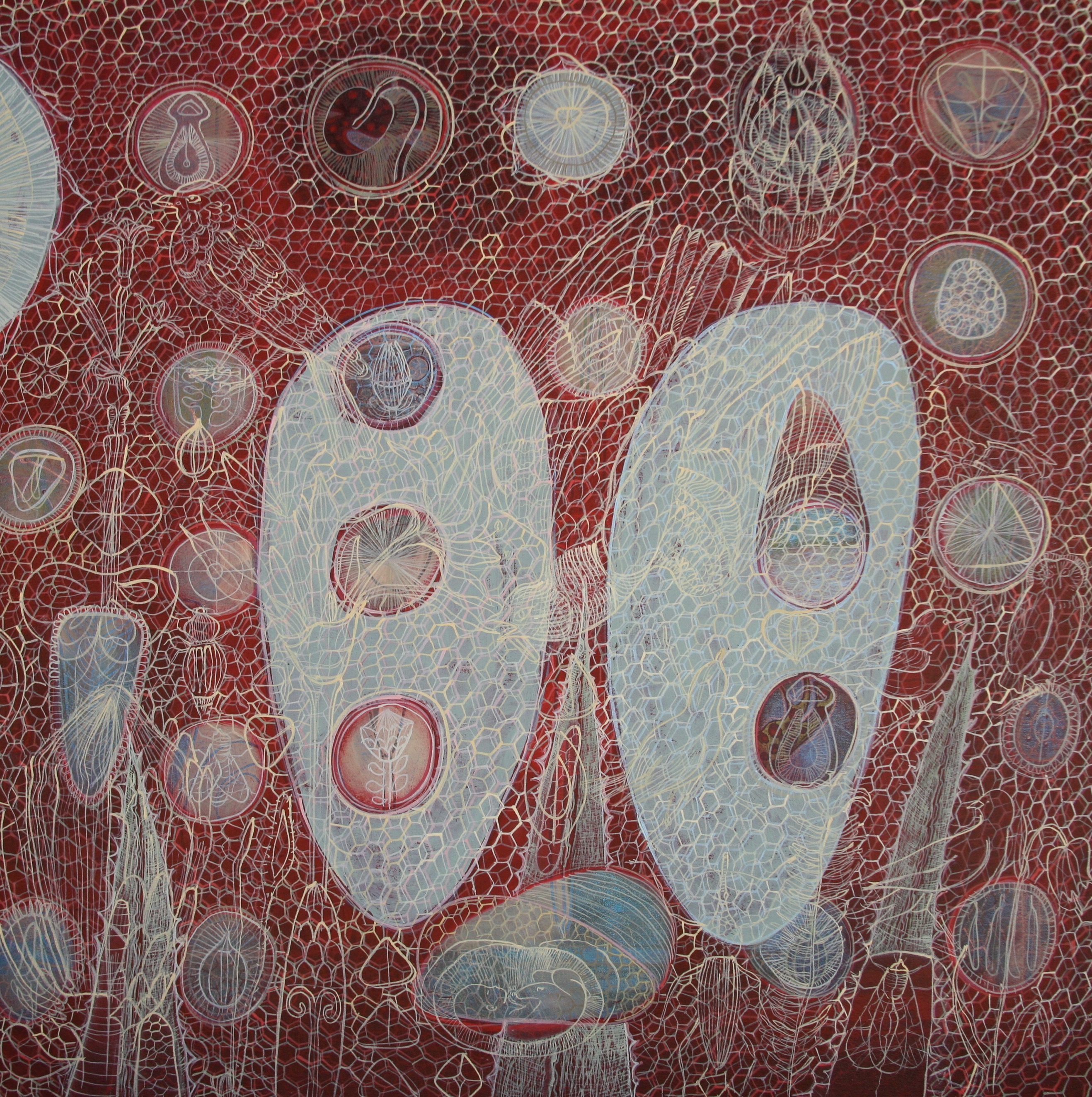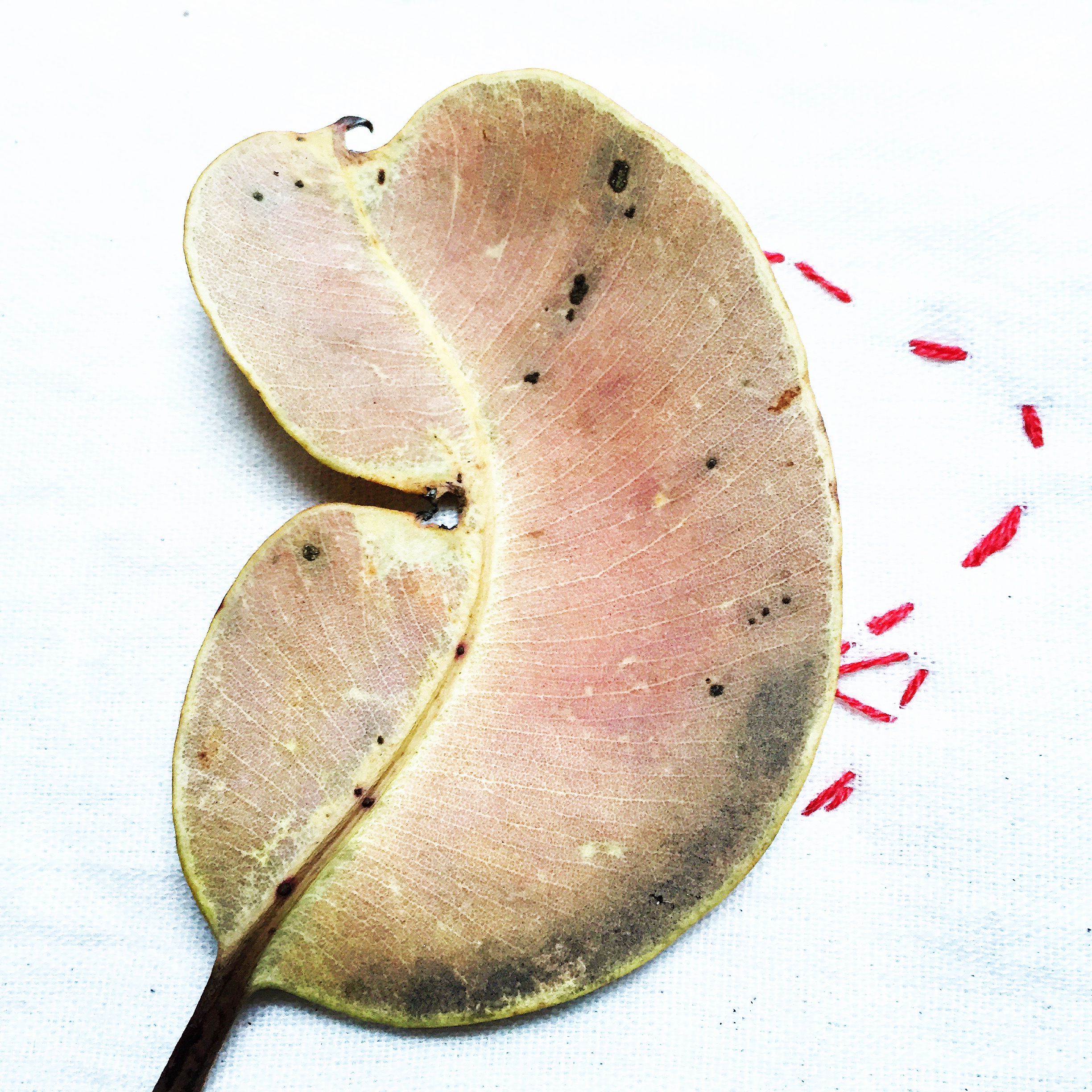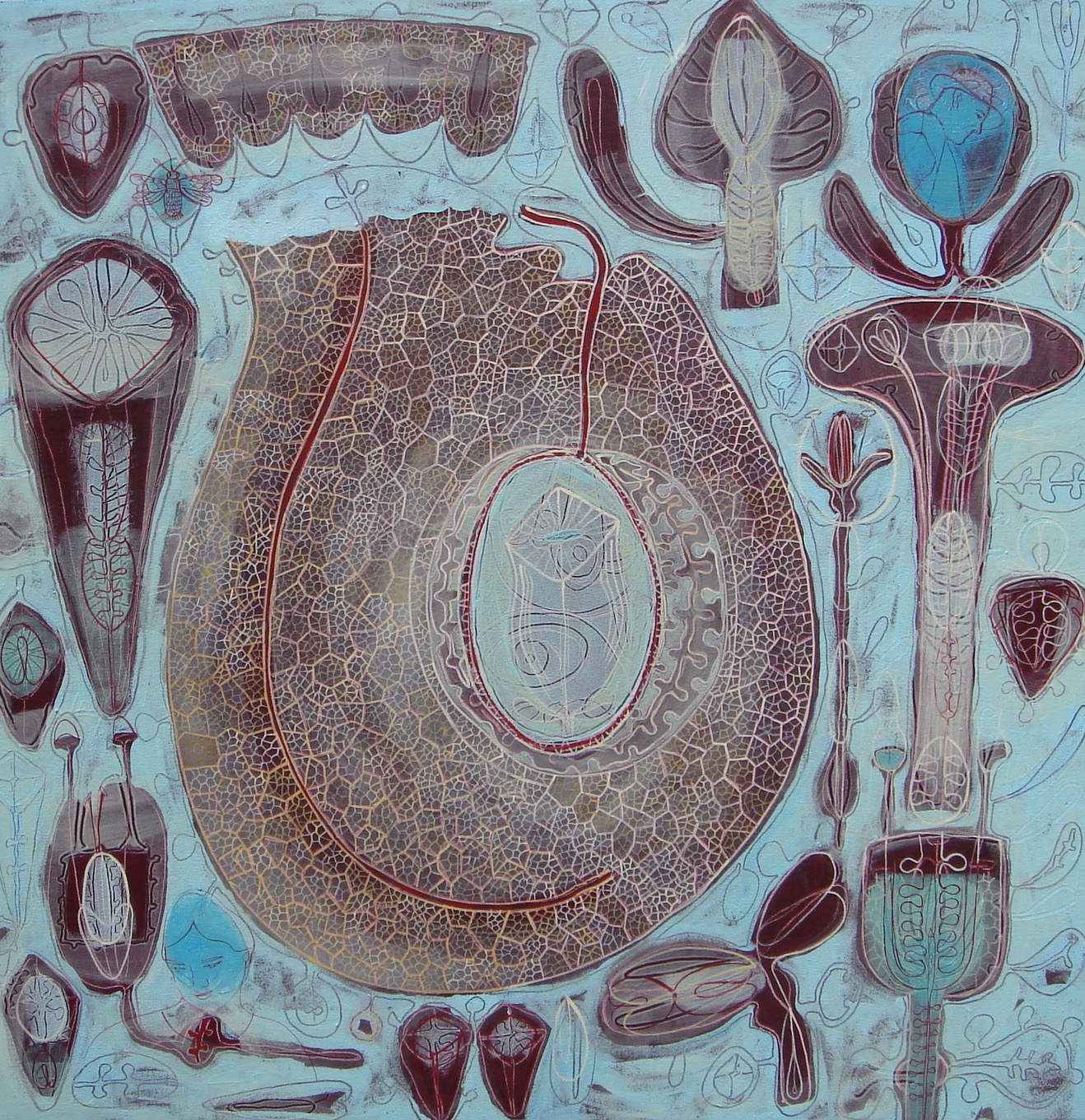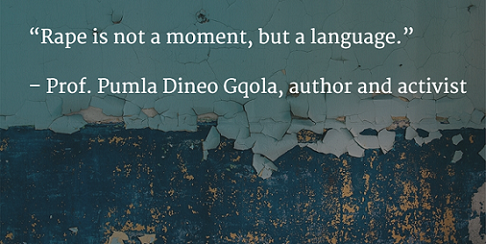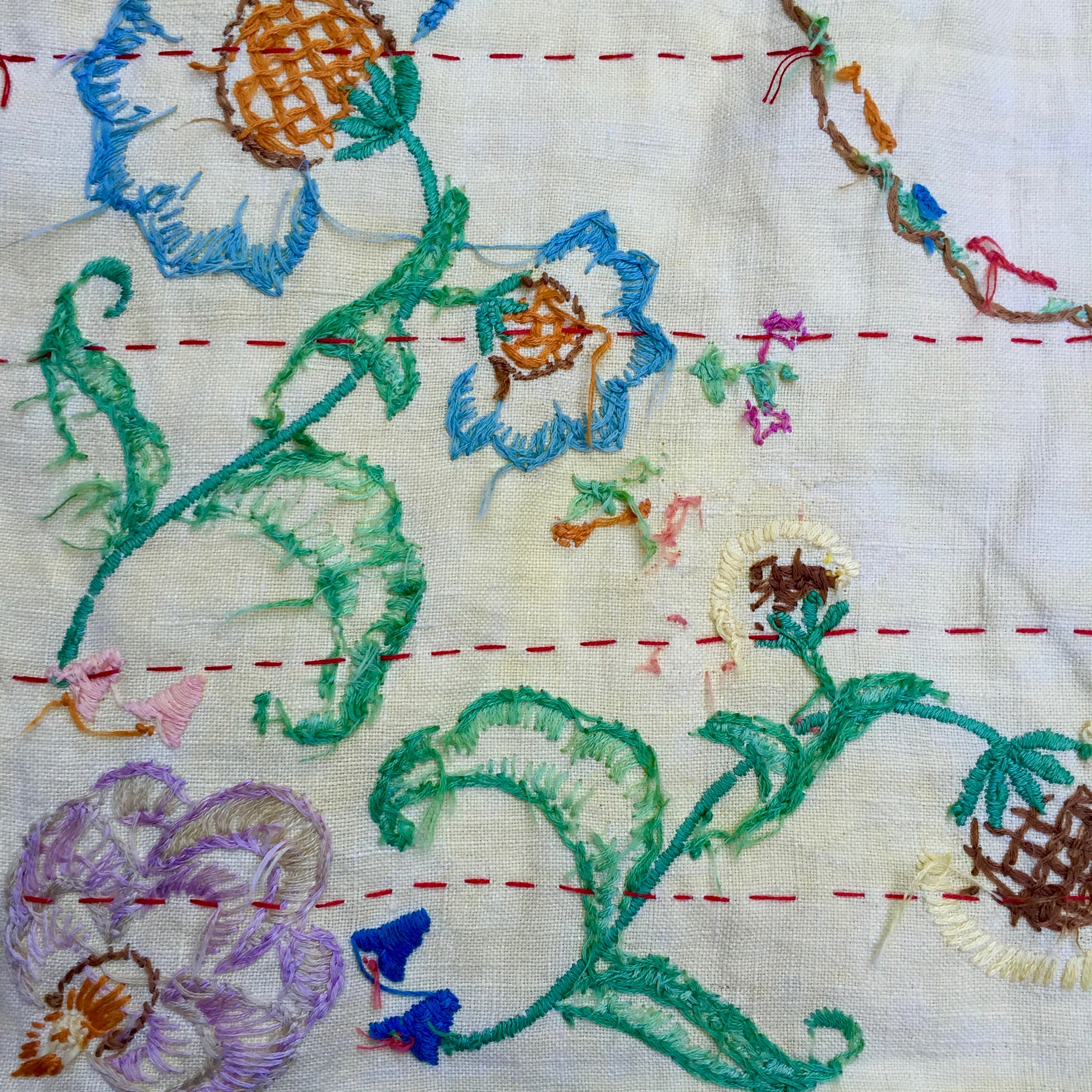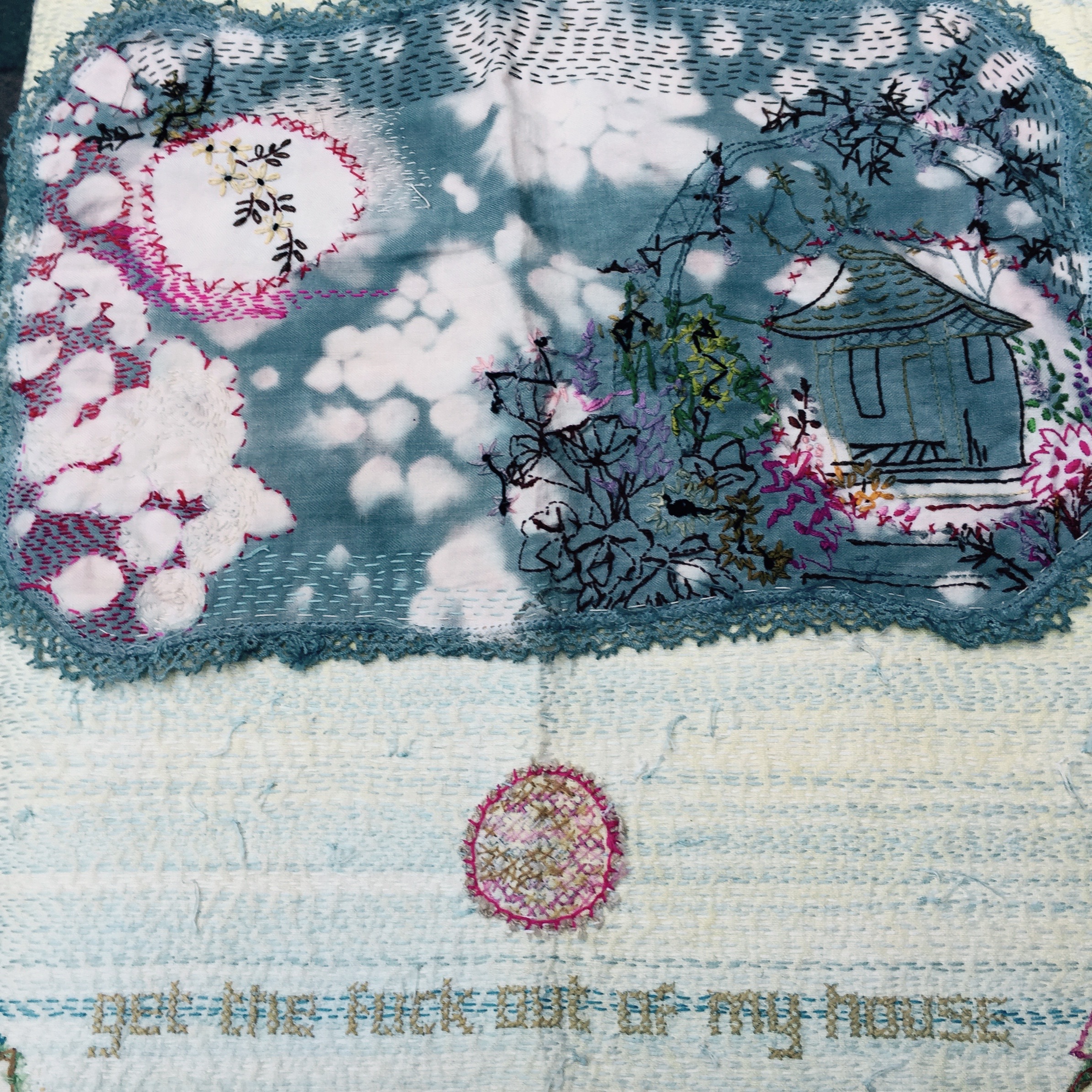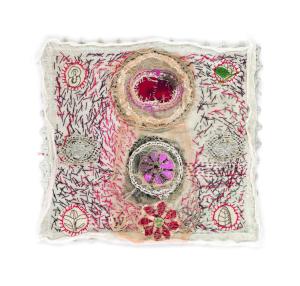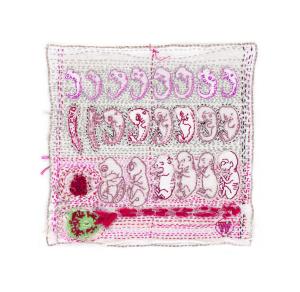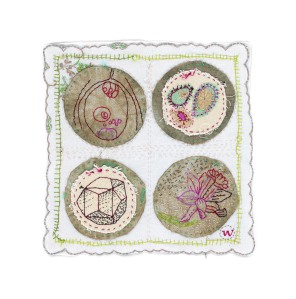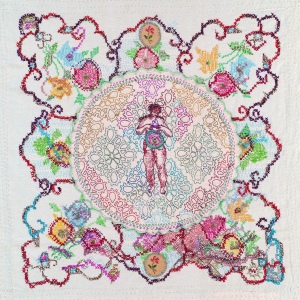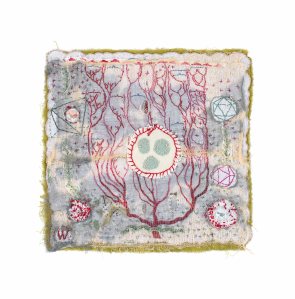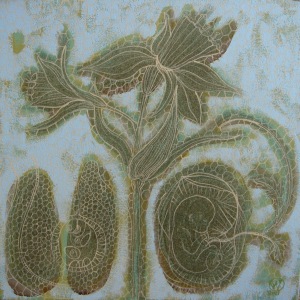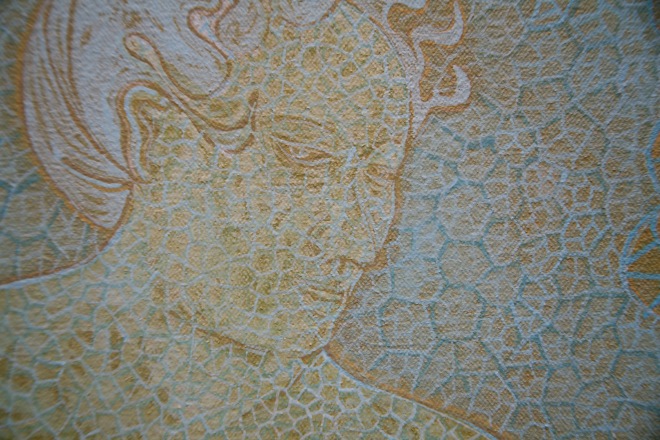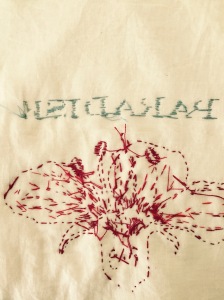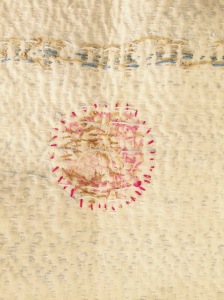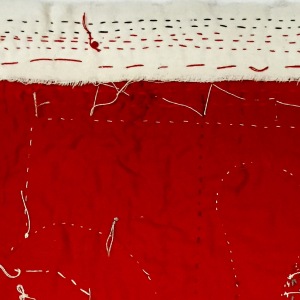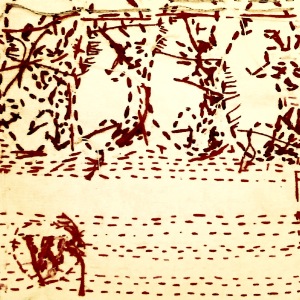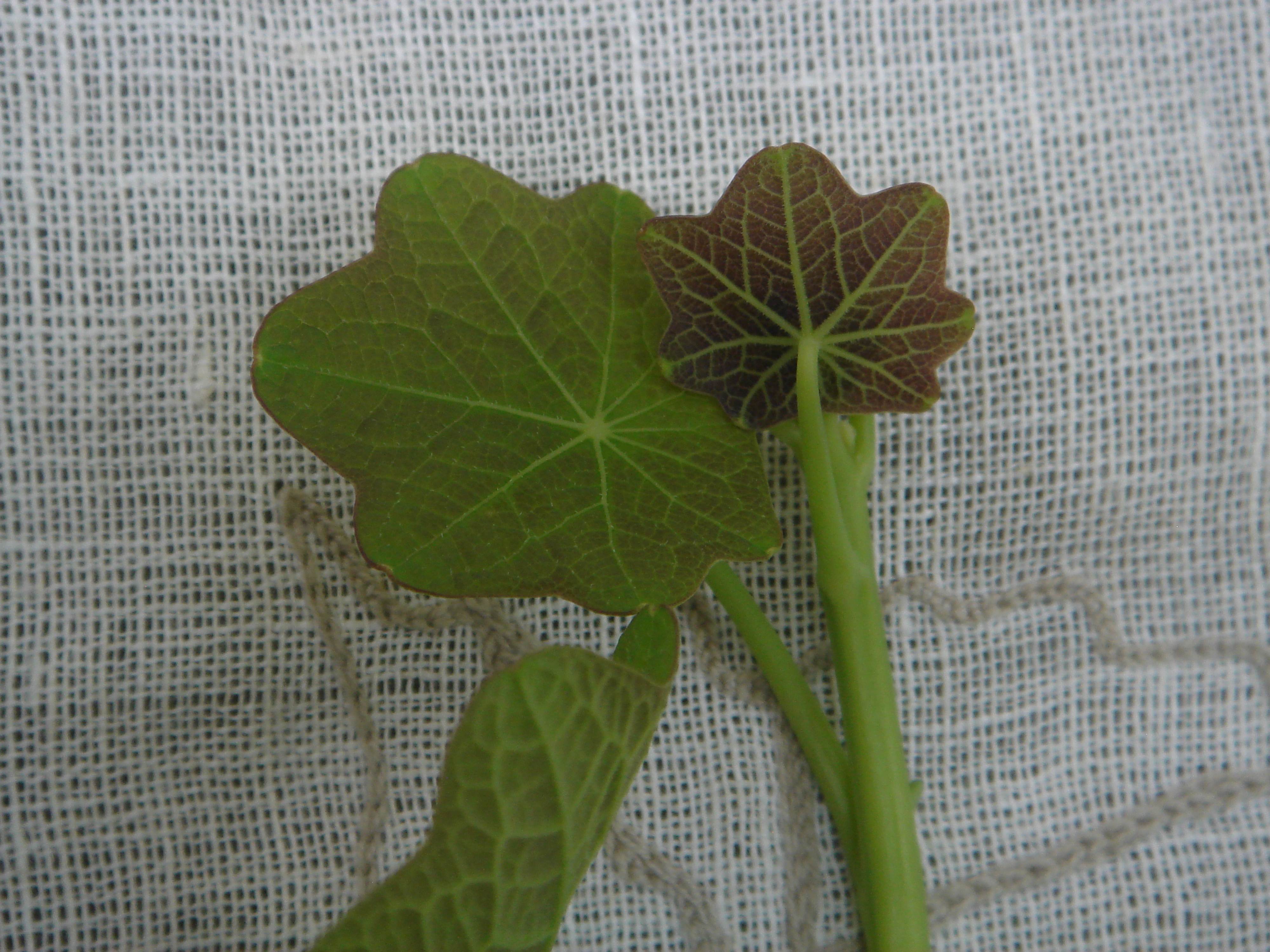She dreams of waves rolling down the railway tracks, filling the subway tunnels underneath before surging out onto the road. Cars flip sideways to float away to who-knows-where. Her faraway friend, R, waves from the other side of the short tunnel, treading water up to her neck in the churning foam of the sea behind her.
She often dreams of being tumbled in deep, black water; suspended in time. Fear and excitement in equal measure.
Waking up from this brief and vivid dream she feels deep loneliness. There’s no meaning there, she thinks, before turning on her side and drifting off to sleep.
present tense
Such random thoughts and questions today.
I’m trying to understand my compulsion to stitch images onto cloth. Also trying to understand why I’m drawn to certain images and not others … and to find a link, if it exists, between them. I know that I am searching for connections between all living things; connections that speak of some kind of universal unity, or origin. Something simple and complete, like a small dot, the full stop at the end of this sentence.
Repeat patterns console me, maybe because I frequently imagine my body’s molecular functions to play out as a continuous patterned chain of actions: hurt and healing, disease and repair. A chained reaction, like a daisy chain, or a string of paper people holding hands.
Or something like the image below.
Often I return to imagery of the female body, and reproductive processes and organs – images of botanical and mammalian wombs that magnetically pull ideas from my mind.
What comes first: meaning or making?
Maybe I am hoping to stitch all my selves together.
What is it I am hoping to find when I trawl images from medieval astronomy or fifteenth century microscopy or seventeenth century cellular biology on the Internet? My mind in an unfocused haze, like the soft gaze of meditation, yet razor sharp when recognising the image I need. What, or who, is behind this knowing? Is the person who knows, separate from the one who seeks?
I sometimes find it useful to run (more like ducking and diving) with my camera in an attempt to erase the surface meaning of a work. However, these images then reveal hidden layers that (alas) start a new search for meaning.
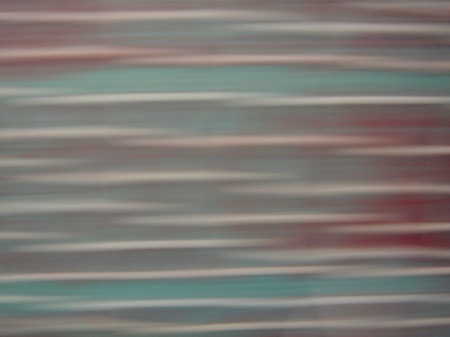 Willemien de Villiers | erasure 2
Willemien de Villiers | erasure 2
Happy creating, and making sense of it all!

